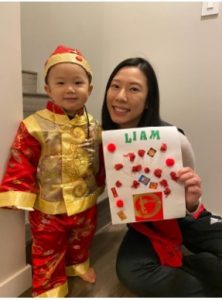Bulletin
Celebrating Chinese (Lunar) New Year
February 10, 2021
To: All MoveUP members
Celebrating Chinese (Lunar) New Year
From MoveUP’s Human Rights & Multicultural Committee
The first day of Chinese New Year (also called Lunar New Year) begins on the new moon that appears between January 21 and February 20. This year, that day falls on February 12.
Marking the end of winter and the beginning of the spring season, observances traditionally take place from New Year’s Eve, the evening preceding the first day of the year, to the Lantern Festival, held on the 15th day of the year. Chinese New Year, or the Spring Festival, is the most important celebration observed in China, with cultural and historic significance.
The festival signals the beginning of spring, and the start of a new year according to the Chinese lunar calendar. The festival is celebrated across the country, but also has many related celebrations in nations and ethnic groups deriving from China and East Asian countries.
How do Chinese people celebrate the Chinese New Year?
- Chinese New Year Decorations — Lucky Red Items. Every street, building, and house where Spring Festival is celebrated is decorated with red.
- Chinese New Year’s Eve — Family Time.
- Firecrackers and Fireworks at Chinese New Year.
- Chinese New Year Gifts and Red Envelopes.
Chinese Zodiac
The Chinese zodiac, or shengxiao (/shnng-sshyao/ ‘born resembling’), is a repeating cycle of 12 years, with each year being represented by an animal and its reputed attributes.
2021 will be a year of the Ox, starting on February 12 and ending on January 31, 2022. The Ox has long been a symbol of power in Chinese culture. An Ox year is usually considered to be a more hopeful and fruitful year, so 2021 is expected to bring better luck.
To see what animal represents your zodiac year, click here.
Personality of the 12 animals:
- Rat: quick-witted, smart, charming, and persuasive
- Ox: patient, kind, diligence, and honest
- Tiger: confident, optimistic, courageous, and intense
- Rabbit: popular, compassionate, and sincere
- Dragon: energetic, fearless, warm-hearted, and charismatic
- Snake: charming, gregarious, generous, and smart
- Horse: energetic, independent, perceptive, and popular
- Sheep: imaginative, considerate, kind, and peace-loving
- Monkey: fun, energetic, and active
- Rooster: independent, practical, hard-working, and observant
- Dog: patient, diligent, generous, faithful, and kind
- Pig: loving, tolerant, honest, and sincere
Chinese New Year Recipes
Learn how to make some of these traditional dishes by checking out the recipes here.
Turnip Cake (Lo Bak Go)
“Radish” is a homonym for luck or fortune making this a welcomed dish for Chinese New Year.
Noodles with Fried Bean-Paste Sauce, Beijing Style
Noodles is the long life wishes for the second day of Chinese New Year.
Boiled Dumplings (Jiaozi), Beijing Style
“Jiaozi” is the most traditional food for the first day of Chinese New Year.
Crafts for Kids
What you need
- Glue
- Paper
- Brown Crayon
- Red Pocket
- Red Crepe Paper
- Pom poms
- Stickers
Instructions
- Glue the red pocket to the bottom of the paper
- Draw some branches above the red pocket using the brown crayon
- Roll the crepe paper into little balls and glue them onto the branches
- Glue the pom poms on the paper
- Stick the stickers on the paper

Photo: MoveUP Executive Board member Brenda Chu and her son, Liam.
In solidarity,
Sent on behalf of the Human Rights & Multicultural Committee
Christy Slusarenko, Co-Chair Human Rights & Multicultural Committee
Gunter Seifert, Co-Chair, Human Rights & Multicultural Committee